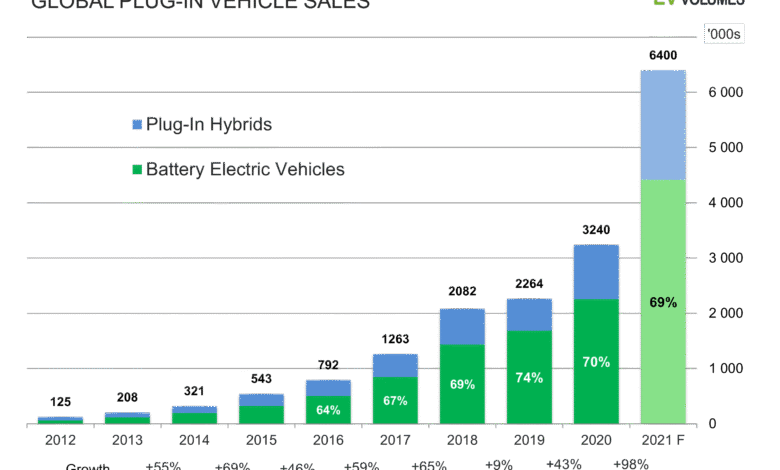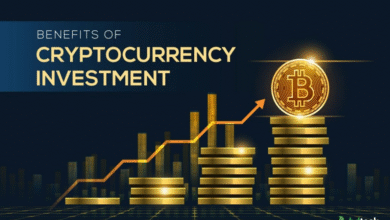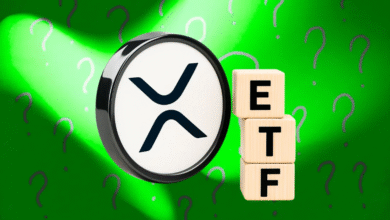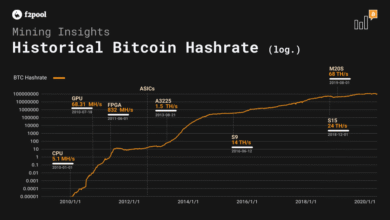EV Sales Surge: Consumers Rush Before Tax Credit Ends

EV sales have experienced a remarkable surge as consumers hurry to take advantage of the federal EV tax credit, which is set to end soon. Amidst the impending deadline on September 30, potential buyers are keen to secure the $7,500 incentive that makes electric vehicle purchases significantly more appealing. With the elimination of these tax credits looming, analysts predict that the third quarter may break previous records for electric vehicle sales, driving market activity to unprecedented levels. In July alone, nearly 130,100 new electric vehicles were sold, marking one of the highest monthly totals ever recorded. As demand for greener alternatives intensifies, the EV market stands poised for dramatic changes, fueled by government incentives and consumer enthusiasm.
The rapid growth in electric automobile purchases is drawing attention, particularly as potential buyers scramble to benefit from advantageous financial incentives. With the recent legislative shift threatening these perks, individuals are rushing to secure their new green rides before the opportunity slips away. Analysts expect the impending deadline to catalyze a historic upswing in electric vehicle acquisitions, indicating a notable shift in consumer behavior. In July, sales figures highlighted the increasing popularity of alternative-fuel vehicles, lending support to notions of a dynamic market landscape. As electric mobility gains momentum, the ramifications for both new and pre-owned vehicle markets are set to unfold in intriguing ways.
Surge in EV Sales Amid Tax Credit Deadline
As the September 30 deadline approaches, the urgency among consumers to purchase electric vehicles (EVs) has led to a remarkable surge in EV sales. Analysts from Cox Automotive report that nearly 130,100 new EVs were sold in July alone, marking a 26.4% increase from the previous month and illustrating consumer behavior influenced by the impending expiration of the $7,500 EV tax credit. This push for new EV purchases is not only a reaction to the tax break ending but also reflects an increasing trend toward electric mobility that is becoming a significant part of the automotive market.
The rising sales figures indicate a robust demand for electric vehicles, as they now make up about 9.1% of total passenger vehicle sales – the highest percentage recorded in a single month. Moreover, models such as the Chevy Equinox EV and Honda Prologue have seen record-breaking sales, suggesting that buyers are not just rushing to claim tax credits but are also strongly considering which EV models best meet their needs. As the market adjusts to a new financial landscape post-tax credit, the implications for consumer choice and market trends will be critical.
The Impact of EV Tax Credits on Consumer Behavior
The $7,500 EV tax credit was strategically designed to bolster the electric vehicle market by making new and used EV purchases more financially appealing to consumers. With this incentive, the financial barrier to owning an EV has been significantly reduced, bringing the price of these environmentally friendly vehicles closer to parity with traditional gasoline cars. As many consumers gear up to make a purchase before the tax incentive expires, the current purchasing spree reflects the importance of financial incentives in driving consumer behavior toward electric vehicles.
However, the elimination of these tax breaks has raised concerns among consumers and analysts alike about the future competitiveness of EV pricing in the U.S. market. While the purchasing rush presents an immediate uplift in sales figures, it’s crucial to forecast how the absence of incentives will affect long-term EV sales. Analysts predict a potential decline in sales towards the end of the year as the market adjusts and consumers reassess the financial viability of purchasing electric vehicles without the tax credits.
Record Sales of New and Used EVs
In July, the electric vehicle market recorded impressive figures with nearly 130,100 new EV sales and approximately 36,700 used EVs sold, marking a historical high for the used EV market. This notable increase is a testament to the growing acceptance and preference for electric mobility among consumers. EV models across the board have experienced heightened interest, particularly models not associated with Tesla, indicating that the electric vehicle market is diversifying and broadening its appeal to various segments of consumers.
The variety of available EV models plays a pivotal role in enhancing market growth. With specific models reaching record sales, such as the Chevy Equinox EV, it’s evident that demand is not limited to just one or two manufacturers. Buyers are increasingly choosing electric vehicles for their environmental benefits and long-term savings, further catalyzed by the current incentives. The data suggests that this trend may continue, especially as consumers seek out vehicles that align with their eco-friendly values while also benefiting from the financial incentives available until the end of September.
Navigating the EV Market After Incentives End
Looking ahead, the landscape of the EV market is anticipated to shift dramatically once the federal tax credits expire. Analysts predict that the fourth quarter of this year may see a noticeable dip in EV sales as potential buyers re-evaluate their financial options without the support of incentives. This adjustment period could challenge dealerships and manufacturers as they strategize to sustain sales momentum in a new market environment.
Despite this looming adjustment, the used EV market may very well continue its upward trajectory. With the availability of used EVs increasing and many consumers no longer qualifying for the federal tax incentives, it is likely that smart buyers will turn to the second-hand market. Industry experts believe that the affordability factor of used EVs will attract a diverse range of consumers who are looking to switch to electric without the premium price tags associated with new vehicles.
The Role of EV Dealers in Encouraging Purchases
In light of the approaching deadline for the EV tax credit, dealerships are stepping up their efforts to attract consumers looking to make a purchase while they can still benefit from financial incentives. Many dealers are promoting limited-time offers and additional financial incentives to encourage quick transactions. By prominently displaying messages about the tax credit expiration, dealers are creating a sense of urgency that can lead to increased foot traffic and sales.
Moreover, the average additional dealer incentives of roughly $9,800 for new EV purchases signify a strategic move to enhance customer value propositions in a competitive market. As consumers become more aware of the benefits of electric vehicles, it is crucial for dealers to leverage these financial incentives to facilitate smoother transitions towards sustainable mobility, creating an ecosystem that supports the growth of electric vehicle sales.
Understanding EV Incentives Across States
In addition to the federal tax incentives, states and local governments have implemented various incentive programs aimed at promoting electric vehicle adoption. These state-specific EV incentives can include rebates, tax credits, and grants that further reduce the purchase cost of EVs. Such programs are critical in geographical regions where consumers may still be hesitant to transition to electric vehicles due to upfront costs.
The variances in state incentives underscore the importance of localized policy efforts in supporting the electric vehicle market. Consumers need to navigate these options carefully, as some states provide more substantial benefits than others. As awareness and adoption of EVs continue to grow, future government policies will play an essential role in determining the pace at which electric vehicle sales can expand along with meeting environmental priorities.
Environmental Implications of EV Adoption
The transition toward electric vehicles is not solely a financial or market-driven initiative; it carries significant environmental implications as well. With the transportation sector accounting for the largest share of greenhouse gas emissions in the U.S., the promotion of EVs via incentives has the potential to substantially reduce emissions over time. Studies indicate that electric vehicles are much better for the environment than traditional cars powered by internal combustion engines, further justifying the need for widespread consumer adoption.
By utilizing financial incentives like the EV tax credit, policymakers aim to encourage consumers to opt for electric over conventional vehicles, thus mitigating negative environmental impacts. As consumers embrace electric mobility, it contributes not only to personal savings but also plays a vital role in our collective effort to achieve sustainability goals. The expansion of the EV market thus presents an opportunity for profound change in the fight against climate change.
Future of the Used EV Market
Although the federal tax credit may no longer be available, the used EV market is poised for continued growth. As electric vehicles become more mainstream, the pool of available used EVs is expanding, catering to a broader interest base. Growth in this segment can also provide a more accessible entry point for consumers who are hesitant about the higher costs associated with new electric vehicles.
Analysts suggest that used EVs can still offer value to budget-conscious buyers or those reluctant to invest in newer models without the benefit of tax incentives. Consequently, the used EV market represents a dynamic sector that could evolve rapidly, as many buyers become increasingly appreciative of electric vehicles and their long-term cost savings compared to traditional models.
Challenges Ahead for EV Manufacturers
As the end of the EV tax credit looms, manufacturers are bracing for possible challenges in maintaining sales momentum. The financial cushion provided by the incentives has been a crucial factor for many consumers, and with the loss of this support, it may become increasingly difficult to attract buyers. This situation could lead to increased pressure on manufacturers to lower prices or increase promotional efforts to sustain demand.
While new EV models are continuously being developed and marketed, the elimination of the tax credit could disrupt the trajectory of EV sales growth that analysts expect. Manufacturers will need to come up with innovative solutions and marketing strategies to convince consumers to continue making the switch to electric vehicles.
Frequently Asked Questions
What impact will the end of the $7,500 EV tax credit have on electric vehicle sales?
The end of the $7,500 EV tax credit is expected to significantly affect electric vehicle sales as consumers rush to purchase before the deadline. Analysts predict that Q3 2023 may see record high sales due to heightened consumer urgency to claim these incentives.
How will the ending of EV tax credits affect new EV purchases?
With the impending end of the $7,500 tax credit, new EV purchases are likely to surge as consumers aim to benefit from the financial incentives before they expire. This urgency could lead to significant sales spikes in the months leading up to the deadline.
What are the current trends in the used EV market following the tax credit announcement?
The used EV market is witnessing growth despite the $4,000 tax break being infrequently applicable. With increased availability and a decline in new EV incentives, used EV sales are expected to expand significantly as consumers look for cost-effective alternatives.
Are there any additional EV incentives besides the federal tax credits?
Yes, in addition to the federal EV tax credits, many states and utilities provide additional financial incentives to encourage EV sales. These local programs can significantly enhance the affordability of both new and used EV purchases.
How has the average transaction price of new EVs changed with the tax incentives?
The average transaction price for new electric vehicles is currently around $55,689. However, when factoring in the $7,500 EV tax credit, the effective price for consumers drops to approximately $48,189, making EVs more competitive with traditional gasoline vehicles.
What is the expected sales forecast for EVs after the tax credit expiration?
Analysts predict a potential ‘collapse’ in EV sales in the fourth quarter of 2025 once the tax credits expire. Consumers might hesitate to purchase EVs without the financial incentives, leading to a market adjustment.
What specific EV models have shown significant sales growth recently?
Recent sales data indicates that models like the Chevy Equinox EV, Honda Prologue, and Hyundai IONIQ 5 experienced record-breaking sales in July 2023, reflecting a growing consumer interest in these vehicles amidst the changing incentives.
Why are consumers concerned about the EV tax credit expiration?
Consumers are concerned about the expiration of the EV tax credit because it directly impacts the affordability of electric vehicles. The tax credit makes EVs more financially appealing, and its removal could deter potential buyers from making new purchases.
What strategies are EV dealers implementing in light of the tax credit deadline?
To stimulate sales before the tax credit deadline, EV dealers are promoting urgency by highlighting the $7,500 tax credit’s expiration and offering additional financial incentives, averaging around $9,800 for new EV buyers.
Will the removal of the EV tax credit affect the overall sustainability of electric vehicles?
While the removal of the EV tax credit could impact sales figures, electric vehicles continue to be more environmentally friendly than traditional vehicles. Therefore, their long-term adoption may rely on additional incentives and state support to maintain market growth.
| Key Point | Details |
|---|---|
| Termination of $7,500 Tax Credit | President Trump signed legislation ending the $7,500 EV tax credit after September 30, creating urgency among consumers to buy before the deadline. |
| Record EV Sales in July | Approximately 130,100 new EVs were sold, marking a 26.4% increase from June and a 20% year-over-year increase. This represents 9.1% of total passenger vehicle sales. |
| Focus on New EV Models | Specific models like the Chevy Equinox EV and Hyundai IONIQ 5 achieved record sales, indicating consumer interest in new EV technology. |
| Tax Credit Financial Impact | The $7,500 tax credit is crucial for making EVs competitive with gasoline cars, helping to reduce the average buying price of an EV towards parity with traditional vehicles. |
| Dealer Promotions | In an effort to boost sales before the credit expires, dealers are offering additional financial incentives averaging around $9,800 per transaction. |
| Future Sales Predictions | Analysts predict a potential sales collapse for EVs in Q4 2025 after the tax credits end, with a shift in focus towards the used EV market. |
Summary
EV sales have surged as consumers rush to take advantage of the expiring $7,500 tax credit. With the impending deadline set for September 30, 2025, the market has experienced significant growth, particularly in July, where new EV sales reached record highs. This drive for purchasing before the financial incentive is removed reflects the ongoing demand for electric vehicles and highlights the crucial role of tax credits in making EVs more accessible to consumers. As the industry transitions post-September, the market may face challenges, but the shift towards used EVs could provide new opportunities.




